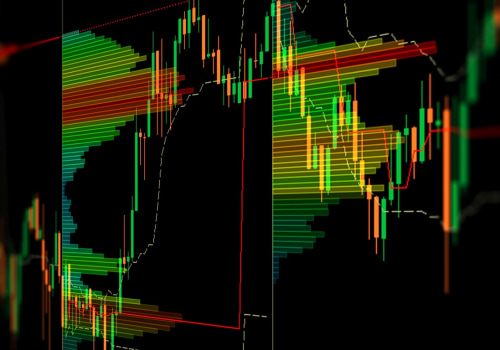Position sizing is an important concept for any Forex trader to understand. It is the process of determining how much of a currency pair to trade in order to maximize profits while minimizing risk. This article will explore the basics of position sizing and how it can be used in Forex trading to help you become a more successful trader. Position sizing involves assessing your risk tolerance, setting your goals, and determining the size of your position accordingly. This means that you should always consider your appetite for risk before trading, and adjust your position size accordingly.
It also means that you should never risk more than you can afford to lose. Another important aspect of position sizing is understanding the different types of orders that can be placed. There are limit orders, market orders, and stop orders. Each type has its own advantages and disadvantages, and it's important to understand how each one works before trading. Finally, position sizing is also important when it comes to managing risk. By properly sizing your positions, you can ensure that you are not taking on too much risk at any one time.
This will help you stay within your risk tolerance levels and maximize your profitability. By understanding position sizing and how it applies to Forex trading, you can become a more successful trader. This article will provide you with an overview of the basics of position sizing and how it can be used in Forex trading.
What is position sizing?
Position sizing is the process of determining the size of a trading position in order to manage risk. It is an important tool for any forex trader who wants to optimize their trading strategy. Position sizing helps you determine the number of shares or contracts you should buy or sell, as well as the amount of money you should invest in a trade.By properly managing risk, traders can maximize their potential rewards while minimizing their potential losses.
Why is position sizing important for forex trading?
Position sizing is essential for successful forex trading because it helps traders manage risk. When traders know how much they are willing to risk on a trade, they can make informed decisions about when to enter and exit positions. In addition, by setting a maximum amount of risk, traders can limit their exposure to large losses.Types of position sizing strategies
There are several different types of position sizing strategies that traders can use. These include fixed fractional, fixed percentage, fixed dollar, and dynamic position sizing.Each of these strategies has its own benefits and drawbacks, so it is important to research each one and decide which one best suits your trading style and goals.
How to calculate position size
Calculating position size is relatively simple. Generally speaking, traders will calculate the size of a position based on the number of shares or contracts they wish to purchase or sell, as well as the amount of money they are willing to risk on the trade. The exact formula for calculating position size will vary depending on the type of strategy used.Risk management tips for position sizing
When using position sizing strategies, it is important to practice proper risk management techniques. This includes setting a maximum amount of risk on each trade, as well as using stop-loss orders and other protective measures to limit potential losses.Additionally, it is important to remember that past performance does not guarantee future results.
Examples of position sizing in practice
To illustrate how position sizing works in practice, let’s look at an example. Suppose a trader has $10,000 in their account and they want to buy 500 shares of a stock at $20 per share. Using a fixed fractional strategy, the trader would calculate their position size by dividing their account balance by the price of the stock: 10,000 / 20 = 500 shares. The trader would then purchase 500 shares at $20 per share.Concluding thoughts on position sizing and forex trading
Position sizing is an important tool for any forex trader who wants to maximize their returns while managing risk.By properly calculating and managing their position sizes, traders can optimize their trading strategies and improve their chances of success. With that in mind, it is important to remember that past performance does not guarantee future results.
What is Position Sizing?
Position sizing is a risk management tool used by traders to control the amount of money they are willing to risk in a single trade. It is a way of adjusting the size of your position to the level of risk you are comfortable with. It is an important tool for any forex trader, as it helps them manage risk and optimize their trading strategy. Position sizing allows traders to adjust the amount of capital they are willing to risk in each trade, depending on their risk appetite.Traders can use it to avoid taking on too much risk in each trade, and to ensure that their total risk exposure is within their acceptable level. By limiting the amount of capital they are willing to risk in each trade, traders can prevent large losses from wiping out their trading account. Position sizing differs from other risk management tools such as stop loss orders in that it allows traders to adjust the size of their position according to their risk appetite, rather than relying on a fixed size of position. This flexibility makes it easier for traders to adjust their position size according to market conditions, and also allows them to take advantage of more favorable entry and exit points. Position sizing is an important tool for any forex trader, as it helps them manage risk and optimize their trading strategy. By adjusting the size of their position according to their risk appetite, traders can ensure that they are not taking on too much risk in each trade, and can also take advantage of more favorable entry and exit points.
Why is Position Sizing Important for Forex Trading?
Position sizing is an essential tool for any forex trader, as it helps to manage risk and optimize trading strategies.By properly managing risk through position sizing, traders are able to increase their chances of success in the forex market. Position sizing helps traders to define the size of their trades based on the amount of risk they are willing to take. By setting limits on trade size, traders can ensure that they are not exposing themselves to too much risk at any given time. This helps to protect traders from taking on too much risk and suffering significant losses.
Position sizing also helps traders to optimize their trading strategy. By setting limits on trade size, traders can ensure that they are entering positions with a reasonable expectation of success. This helps traders to identify trades that are likely to be profitable and reduce the chances of entering trades that are likely to result in losses. Finally, position sizing can help traders increase their chances of success by allowing them to diversify their portfolio.
By diversifying their portfolio, traders can reduce their overall risk while still maintaining a reasonable expectation of profits. This helps to ensure that traders do not put all their eggs in one basket and can maximize their chances of success in the long run. In summary, position sizing is an essential tool for any forex trader. It helps to manage risk, optimize trading strategies, and increase chances of success in the forex market.
By properly managing risk through position sizing, traders can ensure that they are not exposing themselves to too much risk at any given time and can maximize their chances of success in the long run.
Examples of Position Sizing in Practice
Position sizing is an important tool for any forex trader. It is a way to manage risk and optimize trading strategies by choosing the right trade size for each transaction. To illustrate how position sizing can be used in real-world situations, let's look at a few examples. One of the most common strategies is to adjust the position size according to the amount of risk you are willing to take.For instance, if you are comfortable with risking 1% of your trading capital per trade, then you can adjust your position size accordingly. This means that if you have a trading account of $10,000, then you would only risk $100 per trade. Another example of position sizing is to adjust the size of your trades based on the volatility of the currency pair. For instance, if you are trading a highly volatile pair, like GBP/USD, then you may want to reduce your position size in order to reduce the risk.
On the other hand, if you are trading a less volatile pair, like EUR/USD, then you could increase your position size in order to maximize profits. Finally, position sizing can also be used to manage risk when trading in multiple currencies. For example, if you are trading in both EUR/USD and GBP/USD, then you may want to adjust your position sizes accordingly. By doing this, you can ensure that you are not taking too much risk in any one currency and that your overall portfolio is balanced. Position sizing is an important tool for any forex trader. By understanding how it works and applying it to your trading strategy, you can manage risk more effectively and achieve better results.
How to Calculate Position Size
Position sizing is an important tool for any forex trader.It helps you manage risk and optimize your trading strategy. Calculating your position size correctly is essential to ensure that you do not take on too much risk and that your trading strategy remains profitable. In this article, we will explain how to calculate position size in a way that is easy to understand. We will provide a step-by-step guide with practical examples that demonstrate the calculation process.
Step 1: Calculate the Risk
The first step in calculating your position size is to determine how much you are willing to risk on a single trade.This should be based on your risk tolerance and trading plan. For example, if you have a risk tolerance of 2%, you would be willing to risk 2% of your total account balance on any given trade.
Step 2: Calculate Your Stop Loss
The next step is to calculate your stop loss for the trade. This is the amount of pips that you are willing to lose if the market moves against you.Your stop loss should be based on the technical analysis of the market and your trading plan.
Step 3: Calculate the Lot Size
Once you have determined your risk and stop loss, you can calculate the lot size for the trade. The lot size is the number of units you will be trading in the market. To calculate the lot size, use the following formula: Lot Size = Risk/Stop Loss.For example, if you have a risk tolerance of 2% and a stop loss of 50 pips, the lot size would be 0.04 lots (2%/50).
Step 4: Calculate the Position Size
The last step is to calculate the position size. This is the total value of the trade expressed in currency units (e.g., USD). To calculate the position size, use the following formula: Position Size = Lot Size x Unit Price x Exchange Rate.For example, if you are trading EUR/USD with a lot size of 0.04 and a unit price of 1.12, the position size would be 0.04 x 1.12 x 1 = 0.448 USD. By following these steps, you can easily calculate your position size and ensure that you are taking on an appropriate amount of risk for each trade.
Types of Position Sizing Strategies
Position sizing is a risk management tool that helps forex traders optimize their trading strategies and manage risk. It involves adjusting the size of your trade relative to the size of your account balance, so that you are only risking an amount that you are comfortable with. There are several different types of position sizing strategies used by forex traders, each with their own advantages and disadvantages.Fixed fractional position sizing
is one of the most popular position sizing strategies. It involves calculating the size of a trade based on a fixed percentage of your account balance.For example, if you have an account balance of $10,000 and you want to risk 1% of it, your trade would be $100. This strategy helps traders maintain consistent risk levels regardless of how much money they have in their accounts.
Fixed ratio position sizing
is similar to fixed fractional position sizing, but instead of calculating the size of the trade based on a fixed percentage, you calculate it based on a fixed ratio. For example, if you have an account balance of $10,000 and you want to risk 1:2 (meaning that if you lose the entire trade, you will lose twice what you risked), your trade would be $200. This strategy helps traders maintain consistent risk levels even when their accounts vary in size.Equity-based position sizing
is another popular position sizing strategy.It involves calculating the size of a trade based on the amount of equity in your account. For example, if you have an account balance of $10,000 and you want to risk 10% of it, your trade would be $1,000. This strategy helps traders maintain consistent risk levels even when their accounts vary in size.
Volatility-based position sizing
is a more advanced position sizing strategy that takes into account both the size of the account and the volatility of the market. For example, if you have an account balance of $10,000 and you want to risk 1% of it, but the volatility is high, then your trade would be larger than if the volatility was low.This strategy helps traders adjust their risk levels depending on market conditions.
Martingale position sizing
is a risky strategy where traders double their positions after each losing trade. This strategy can be very effective in certain market conditions but can also lead to large losses if not managed properly. For example, if you have an account balance of $10,000 and you want to use martingale position sizing, then after four consecutive losing trades, your position size would be eight times larger than your initial position. Position sizing strategies can be used to help forex traders manage risk and optimize their trading strategies. Each strategy has its own advantages and disadvantages, so it is important to understand how each one works before deciding which one is best for your trading style.Risk Management Tips for Position Sizing
Position sizing is an important tool for any forex trader, as it helps you manage risk and optimize your trading strategy.To get the most out of position sizing, it’s important to set appropriate limits and use sensible strategies to protect your capital. Here are some tips to help you get started.
1.Establish a Risk/Reward Ratio
When it comes to position sizing, one of the most important considerations is your risk/reward ratio. This ratio determines how much you are willing to risk in exchange for the potential reward from a trade. It’s important to establish this ratio before entering a trade, as it will help you determine the size of the position you should take.2.Consider Your Account Balance
Your account balance is another important factor when determining position sizing.This is because the amount of capital you have available for trading will determine how much risk you can take. For example, if you have a smaller account balance, you may want to take smaller positions so that you don’t over-expose yourself to risk.
3.Use Stop Loss Orders
Stop loss orders are an essential tool for controlling your risk when trading forex. This type of order allows you to limit your losses if the market moves against you. When setting stop loss orders, it’s important to consider the size of your position and the amount of risk you are willing to take.4.Monitor Your Positions Regularly
Once you have opened a position, it’s important to monitor it regularly.This will allow you to adjust your position size as needed and ensure that you are not over-exposed to risk. You can use technical indicators or other tools to help with this process.
5.Take Regular Breaks
Finally, it’s important to take regular breaks from trading. This will help you stay focused and prevent yourself from taking on too much risk. Taking breaks can also give you time to reflect on your trading strategy and ensure that it is still working for you.Risk Management Tips for Position Sizing
Position sizing is an important tool for any forex trader.When using position sizing to trade forex, it is important to set appropriate limits and use sensible strategies to protect your capital. There are several risk management tips to consider when using position sizing.
Determine Risk/Reward Ratio:
Before entering a trade, you should determine the amount of risk you are willing to take and compare it to the potential reward. This will help you decide on the size of the position you want to take. You can use a risk/reward ratio calculator to easily determine this ratio.Set Stop Loss Orders:
Setting a stop loss order is one of the most important risk management strategies when trading forex.This will help you limit your losses if the market moves against your position. Setting a stop loss order before entering a trade will help you protect your capital and minimize your losses.
Manage Leverage:
Leverage can be a powerful tool for traders, but it should be used with caution. Leverage magnifies both profits and losses, so it is important to use it responsibly. Consider setting limits on how much leverage you are willing to use in each trade.Monitor Your Positions:
Monitor your positions closely and adjust your position sizing accordingly.If the market moves in your favor, you may want to consider adding to your position. On the other hand, if the market moves against you, you may want to reduce your position size.
Stay Disciplined:
Trading with discipline and following your trading plan can help ensure that you stay on track with your trading goals. Resist the temptation to overtrade or take on excessive risk, as this can quickly lead to losses. Position sizing is an important tool for any forex trader looking to manage risk and optimize their trading strategy. It helps you control the amount of risk you take on each trade, as well as find the optimal balance between risk and reward.Position sizing strategies can be broken down into two main types: fixed position sizing and dynamic position sizing. To calculate position size, traders must consider the size of their account, the risk associated with the trade, and the desired risk/reward ratio. When it comes to risk management, traders should always maintain a proper risk-to-reward ratio and use stop losses to protect their positions. To get started with position sizing, traders should practice with small amounts of money and focus on developing a sound trading strategy. In conclusion, position sizing is an essential element of successful forex trading.
It helps traders manage risk, optimize their strategies, and maximize potential returns. By understanding how to calculate position size, traders can use position sizing strategies to limit their risk and maximize their profits. Finally, traders should always remember to practice proper risk management when using position sizing techniques.












Leave Reply